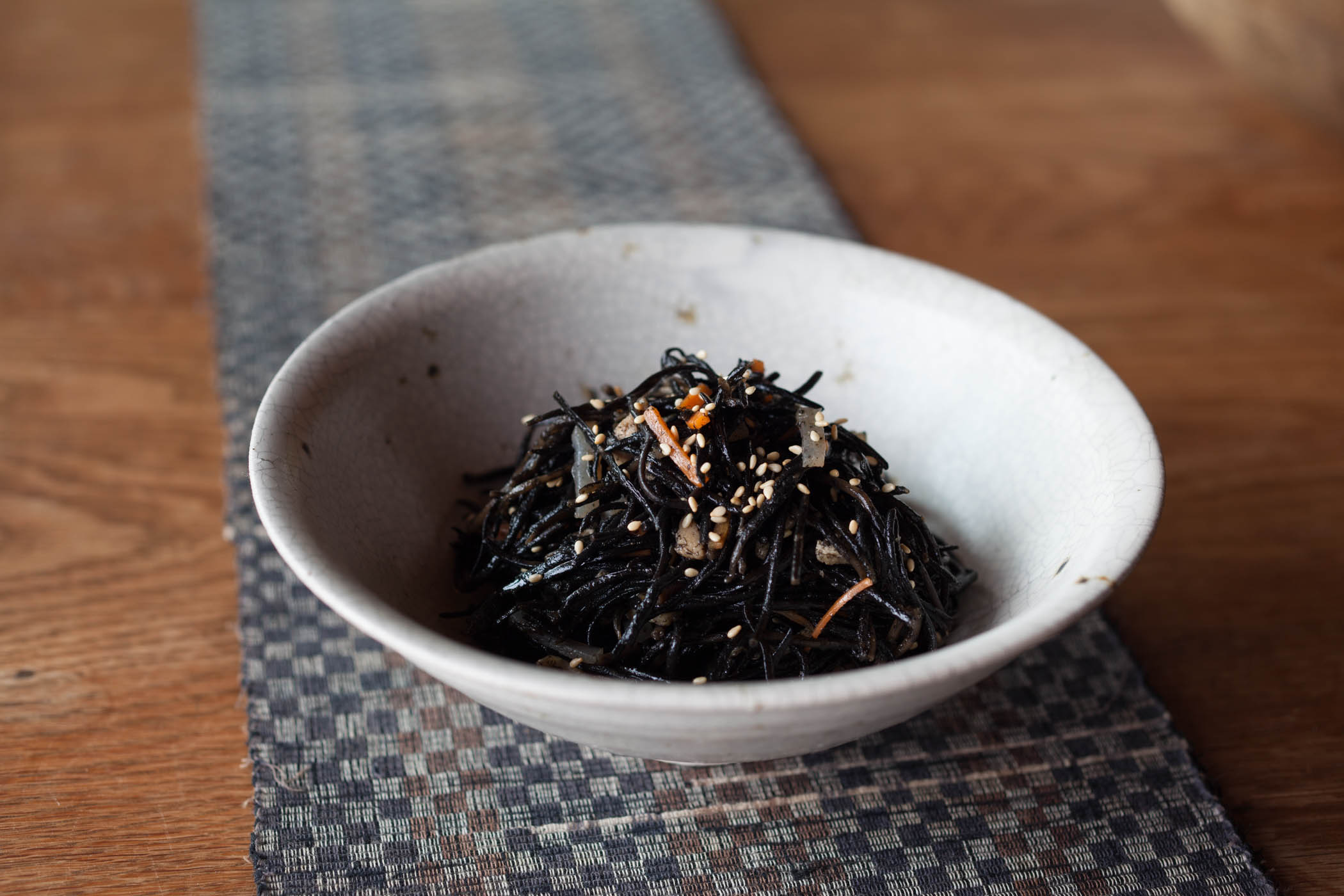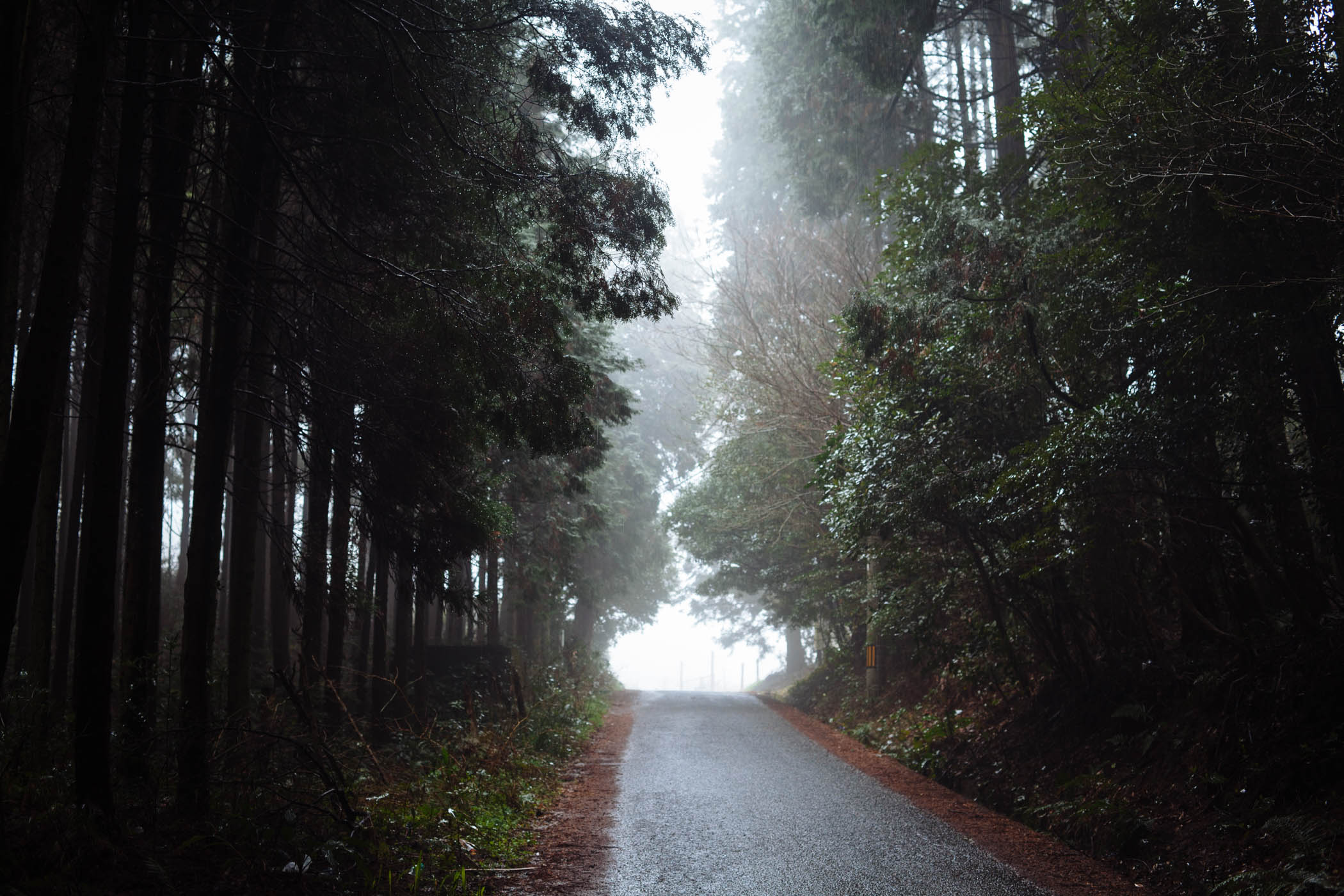Hijiki offers a taste of home

Koo, my sister-in-law, lived in the south of France for many years and has always been our resident expert on all things deliciously French. She would bring us cheese, wine, cured meats, salt, bread, jams olive oil, and butter. Her soufflé on special occasions was always quickly devoured. But when she moved back to Japan and built a house in Karatsu she all but entirely abandoned her well-honed European tastes and returned to a diet of traditional Japanese fare. Now in her fifties, she attributes this renewed appreciation for these familiar and comforting flavors to aging. But I’m of the mind that in general we naturally gravitate towards the inherent consonance of eating foods that are in season in the place we live.
While we plan out menus considering what is in season, which flavors work well together, how many courses to offer and so on, we are led more often than we assume by cravings. Cravings are the demands of physiology and that same physiology that changes over the course of our lives also responds more immediately to the conditions of the day. In summer we crave the light nutrition of crisp raw greens and cooling effect of juicy fruits that mature in warm weather. In autumn, cool air sweetens starchy roots underground and elicits a craving for their sugars.
Hanako and I spend a few months each year in New England, the region where I grew up. We used to fill our suitcases with the flavors of Japan that we thought we might miss. We’d arrive in Maine with packages of dried fish and konbu for dashi, two-dozen salty umeboshi, and nori to eat with rice. Inevitably these ingredients would languish almost entirely unused as we quickly returned to a New England diet of bread, immense salads, local cheeses, wild blueberries, soups and stews, lean steak, ham, new potatoes, dilly beans, oysters, shallot, garlic, butter, yogurt and so many other flavors rarely enjoyed in Japan. On the occasion that we cooked with the ingredients that we had lovingly carried over we felt disconnected from the flavors, a discord between the food and our environment. It tasted different, but not for lack of quality ingredients or know-how.

Washoku’s principles and techniques are perfectly honed to suit Japan’s ingredients so naturally the most exquisite and harmonious expression of Japanese cuisine exists in Japan. The cuisine has evolved in tandem with and thus complements the geography and climate. This can likely be said of any local cuisine, that it tastes best in its original context. The humid, damp environs of Japan facilitate fermentation and so many of the core flavorings of Japanese cuisine, soy, sake, miso, mirin, and vinegar, are fermented. A plentiful supply of soft water streams down the mountains and vast quantities are used in growing and processing many staple ingredients including rice, wasabi, tofu, and sake. The geography of Japan, tall mountains sliding into the sea, offers little room for grazing animals and the native meats are wild, boar, bear, and deer. Rivers and lakes abound and the ocean is never far away housing a dizzying array of aquatic plants and animals.
In recent years chefs have introduced high quality Japanese cuisine to metropolitan capitals around the world. But it’s impossible to precisely replicate the experience of eating a cuisine in situ. In the course of migrating between the States and Japan for so many years, I’ve come to believe that the principles and techniques of washoku are better exported than exact versions of the cuisine itself. What guides the cook in the Japanese kitchen, the handling of a knife, the consideration of the cut and color, a regard for the balance, aroma, and clarity of flavor, these can all be translated without attachment to specific ingredients. The philosophy of washoku asks us to cook and eat in harmony with the local seasons, which is precisely what I do when I slice a ripe August tomato in Maine and eat it in thick slices with herbs grown outside my door. It’s what I do when I crack open delicate Pemaquid oysters or cook from my weekly basket of CSA vegetables grown a few miles away. When we migrate between Mirukashi and Maine, we no longer carry ingredients in our bags, preferring to settle into the local flavors that entirely suit the atmosphere of where we are.
These specific flavors of a region are attributed to fudo. Written with the characters for wind and soil the concept is akin to terroir. It explains the clean dry sake from Nigata or the aromatics of sweet potato shochu from Kagoshima, each brewed from local crops and water. In fudo we understand that flavors are inextricably born of locale. It refers not only to climate and the natural elements of a place but also to its spiritual attributes and suggests that the essence of a region, the air, the light, the water, the soil, infuse local flavors with a quality that cannot be replicated elsewhere. In local cuisines the recipe, ingredients, and environment are inseparable and their most authentic and delicious expressions exist right there where the air and elements reflect the flavors in the dish.
Having spent so many years traveling between rural France and rural Japan, Koo understands what a relief it is to get home after a thirty plus hour journey that requires cars and trains and multiple planes and how deflating it can be to arrive late at night to a cold house with an empty refrigerator. Each year she leaves us a bottle of beer and bento meal to welcome us back. Koo’s bento is one of the most soulful meals I’ll eat all year, a late night reunion with the flavors of Japan after many weeks away. It’s a comforting selection of ofukuro no aji, the familiar flavors of mother’s cooking, cooked vegetables, omelette, hijiki, and rice pressed into onigiri. In those late night bites of hijiki I tasted Koo’s kindness and grew fond of it, a dish I had otherwise rarely eaten and never made. It’s a homely dish with all of the elements that a weary mind and body craves and is also supremely healthful, delivering an infusion of nutrients. The black cords of seaweed are sautéed with bits of colorful carrot, springy usuage tofu skin, chewy strips of konnyaku, and slices of shiitake alongside bites of fatty chicken and seasoned generously with soy. It is pure comfort food. Hijiki is a ubiquitous dish, made by almost every grandmother across the country, and yet no two are alike. Variations are found from season to season, region to region, and from kitchen to kitchen. After a long absence, Koo’s hijiki grounds us back in the fudo of Mirukashi, in the flavors of the air and spirit and people living on this little hilltop.
